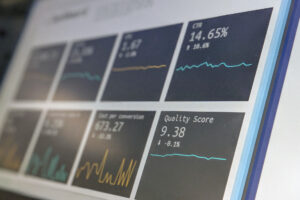 For the past decade Data (or Big Data) is constantly mentioned by business articles and industry front-runners as a central driver of corporate advancement. Most of them assert that the capabilities and alertness gained through the analysis of big data is a panacea of the way a business should be directing its resources and capabilities. And of course, this is partly true! However, data quality, management, compilation and analysis has a set of challenges and limitations. However, HBR articles state that it is one of the most important features of the contemporary economy and society and that we should definitely try to make more sense of it.
For the past decade Data (or Big Data) is constantly mentioned by business articles and industry front-runners as a central driver of corporate advancement. Most of them assert that the capabilities and alertness gained through the analysis of big data is a panacea of the way a business should be directing its resources and capabilities. And of course, this is partly true! However, data quality, management, compilation and analysis has a set of challenges and limitations. However, HBR articles state that it is one of the most important features of the contemporary economy and society and that we should definitely try to make more sense of it.
Evidently, there are two pronounced schools of thoughts right now, effectively conflicting each other. The first school of thought proclaims that global industry leaders such as Steve Jobs, Elon Musk, Warren Buffet, Bernard Arnaultor, Amancio Ortega, Shigeru Miyamoto or Li Hejun – to name a few – are the intuitive captains of industry; and that they alone have/had the instinct to open up new horizons of innovation, growth and opportunities. This view is also misleading, as all of these fine gentlemen have had a combination of luck, historical opportunities, access to data and very strong financial backing to have these prospects offered.
So, if we can’t depend on either the philosophical brainwash of industry leading nor the panacea of big data decision making – what can we possibly depend on for leading our own companies? The answer is both! We need to combine the intuitive with data and allow each other to discount biases on either perspective. A smart leader needs to be open and flexible while taking ownership of decisions and actions. To do that well, we need to combine data analysis and test business assumptions through trusted professionals. Here is quick checklist of tactics we should all keep in mind to ensure a balanced combination of the two:
- Focus: concentrate on mainly understanding the clients that align with your company mission and that can truly appreciate a novel idea.
- Listen: active listening works wonders to build trust and confidence in an idea or product that we are working in our minds.
- Collect: make a policy of collecting and saving key data and information on both positive and negative feedback the company receives.
- Improve: continuously look for ways to develop the level of service or product delivered through data gathering and optimization.
- Target: constantly identify the data sets that must be collected and the methods of making sense of it through company professionals or consultants.
- Irresistible: see how this movie plot identifies the over-emphasis on data analytics and money mongering that drives American politics – in the wrong direction.
The message here is that data analysis – through sorting unstructured information and deriving key insights from it – needs to be done well to be dependable. If done well, several insights can be derived from the data that can be extremely valuable for current and future decision-making. CEOs can be confident in an idea while remaining open and allowing data to influence decision making in a non-biased way. It’s the fine art of doing business today! However, customers are humans – and many times – humans don’t really know what they want. It’s right here that Steve Jobs built the iPhone and iPads, it’s right here that Warren Buffet built Berkshire Hathaway, it’s right here that Elon went to space. Data insight potential is relevant and so is human intuition.